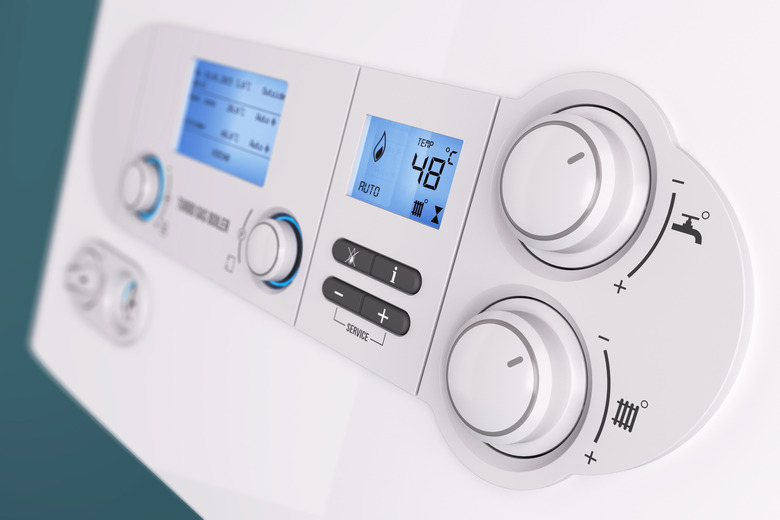How Do Gas Water Heaters Work?
In a gas water heater, two different systems work to supply your hot water. The gas system, which connects to a propane tank or a utility company, provides the energy for heating. The plumbing system, which includes a safety mechanism to prevent explosions, circulates cold water into the tank and hot water out of it.
Components of a Tank-Style Gas Water Heater
Components of a Tank-Style Gas Water Heater
The tank itself is the most visible component of a water heater. It has a corrosion-proof internal lining as well as an anode rod for further protection against corrosion. The tank is situated on a stand and, in earthquake country, should be strapped to the wall.
Gas system components include the burner, situated underneath the tank, an electronic gas valve and a thermostat. Modern gas water heaters usually have an electronic igniter to ignite the gas, whereas older models have a pilot tube with a pilot light that is always burning. Models with a pilot tube also have a thermocouple, which is a safety device that turns off the gas if the pilot goes out.
Plumbing components include the cold inlet and hot outlet ports, located on the top of the tank. Each port has a shut-off valve, and where copper or brass pipes join galvanized steel ones, a dielectric union makes the connection. A drain port on the bottom of the tank and a temperature and pressure-relief valve complete the picture.
The Heating Cycle
The Heating Cycle
The thermostat, located inside the tank, monitors water temperature, and when the temperature falls below the preset value, it signals for heat. If the model has an ignitor, it receives the signal and begins to generate sparks while the gas valve, which also receives the signal, opens. If the model has a standing pilot, the gas valve receives the signal, it opens and the pilot ignites it.
Once the gas ignites, the water heater works just like a pan on a stove until the temperature reaches the cutoff value and the gas shuts off. You can adjust the cut-in and cut-out temperatures by adjusting the dial on the gas control. Most models have three preset values, labeled A, B and C. You can save energy by using the lowest one, which is A.
Because the combustion of gas produces dangerous fumes, a gas water heater needs a venting system. The vent collects rising combustion gases and directs them safely out of the building. Proper circulation through this vent is critical to efficient combustion and heating.
The Thermocouple Keeps the Pilot Lit
The Thermocouple Keeps the Pilot Lit
A water heater with a standing pilot needs a thermocouple. The thermocouple works because two different metals generate a small voltage between them when heated, a phenomenon known as the Seebeck effect. It is positioned in the pilot flame and sends a signal to the gas valve to keep it open whenever the pilot is lit. It shuts off the gas when the pilot goes out.
A Tankless Heater or Gas Geyser Depends on Water Flow
A Tankless Heater or Gas Geyser Depends on Water Flow
A tankless heater, known as a gas geyser in some parts of the world, heats only when you turn on the water. It does this with a sensor that monitors water flow. To keep a gas geyser working, it's important to keep your pipes clear so water flows at full pressure through the internal heat exchange coils. The gas won't turn on if the flow rate is below the sensor's cut-in value.
You can raise water temperature in two ways: turn up the gas so the flame burns hotter or lower the flow rate so the water spends more time in the heat exchanger. Don't lower the flow rate too much, though, or the gas won't come on.
